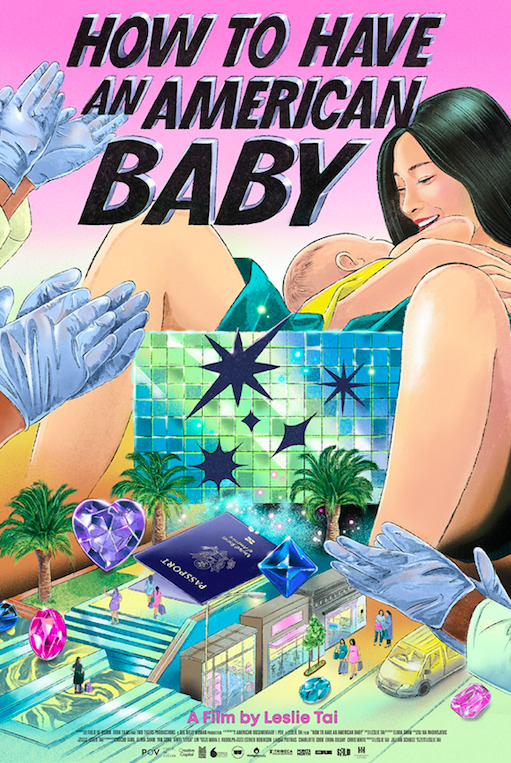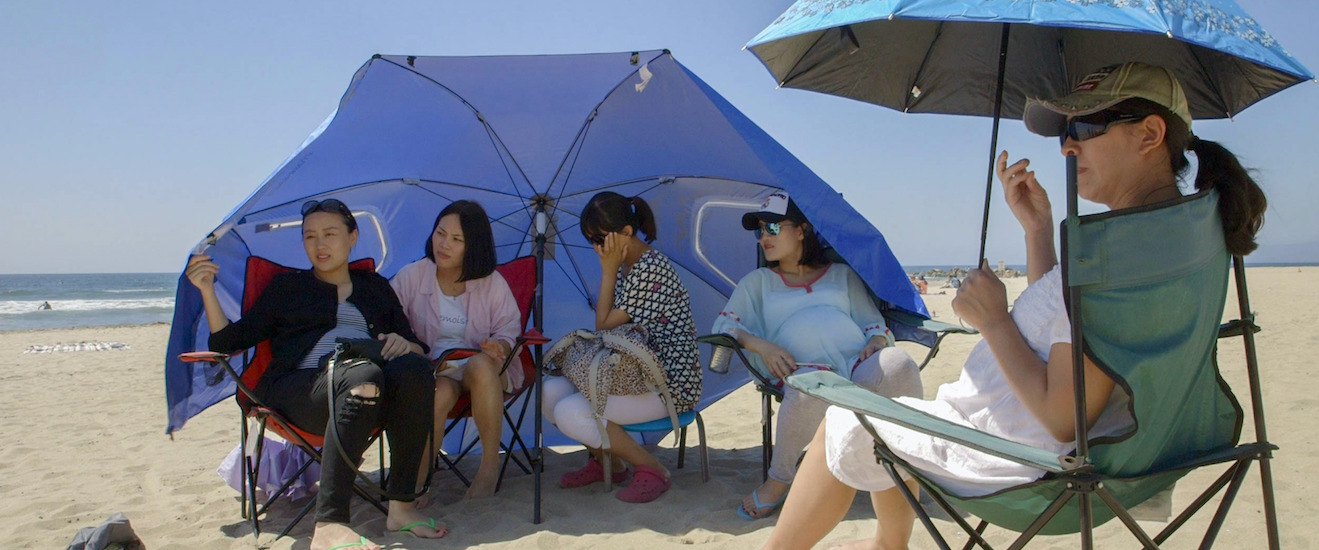
Filmmaker Leslie Tai provides a cinematic peek into the soaring latent economy that addresses Chinese pregnant women who travel to the United States to give birth, to provide a better future for their babies.
How To Have An American Baby — part of the 2023 DOC NYC line-up — is a choral piece that intertwines the stories of various women, who strive to offer the American Dream to their offspring. The film meticulously traces the underground birth tourism industry from Beijing and Shanghai to Los Angeles, through a network of interconnected storylines. The thread that unites them all is the Maternity Hotel where the “Boss Lady” organises for each expectant mother the medical, legal and practical necessities to bring a newborn into a world that is foreign to these women.
Despite these mothers-to-be may come from different social backgrounds, they share the desire to provide to their future children a freedom that isn’t granted in their country of origin. They all have in common a naïve recklessness in embarking upon an adventure they have idealised. The film is heart-wrenching and graphic in portraying the physical ordeal the birthing-mothers confront within the hospital structures and the twists of fate they succumb to during their experience.

Leslie Tai’s documentary comes across as an insightful investigative piece that sheds a light on a phenomenon that reached its maximum peak between 2012 and 2016. During the pandemic the Chinese birth tourism industry went on a hiatus and currently the U.S.-China relationship has made having an “American baby” less desirable than before. However, what occurred during those years is indicative of a speculation on the aspirations and anxieties of a censored society, that was striving to break free and ended up entangled in an exploitative web.
In Southern California there was an invisible army of undocumented nannies, cooks, and drivers who serviced the pregnant Chinese women in America, most of whom didn’t even speak English and completely relied upon the organisation. Chino Hills — ranked as one of the top places to live in the United States — was the stage of this story. This is where the 17-bedroom maternity hotel, housed several ten Chinese nationals and their newborn babies.
We discover how the entire business developed an efficient supply-chain and became extremely profitable, since Chinese birth tourists in their third trimester spent from $30,000 to over $100,000 on “birthing vacations.” From a sociological perspective it is startling to witness how birthing a child in America became a new status symbol in contemporary China. The demand skyrocketed and what is important to highlight is that this entrepreneurial activity was never illegal. In fact the 14th Amendment guarantees birthright citizenship to anyone born on U.S. soil. No one in How To Have An American Baby is represented engaged in illegal activities.

Leslie Tai captures the way fortunes and tragedies befall on these women with utmost sensitivity. She discreetly gives us a glimpse of what is happening. Working as a director and cinematographer she relates to her female characters as a confidante who can help spread a powerful message of warning, simply by using her camera.
This is not the first time that the Chinese-American filmmaker used her fluency in her two cultures to bring forth the intersections between the Eastern and Western hemispheres of the globe. This is blatant in her feature films Lonely Lotus and Sister Heaven Sister Earth, and above all in her short My American Surrogate, that focused on the way China’s wealthy and infertile couples flocked to Southern California to hire American surrogates to have their babies for them.
How To Have An American Baby succeeds in conveying an empathetic experience, where Western women can feel the vulnerability of the Chinese mothers portrayed in the documentary. As we have become engulfed in an era where the “Yellow Peril” dominates the mainstream media discourse of rising China, spectators can perceive the helplessness of the protagonists of this cinematic reportage. The film thus becomes — quoting Leslie Tai — “an allegory for America’s fears and tensions surrounding immigration, homeland security, race, class, and the viability of the American Dream in today’s world.”
Final Grade: B+

